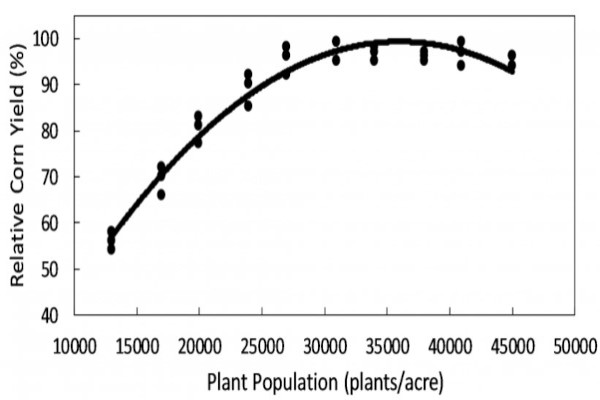By Dr. Mark Licht and Zach Clemens
Choosing a corn seeding rate is as much art as it is science because soil conditions and seed quality can greatly affect the outcome. The goal is to choose a seeding rate that produces an economical optimal yield as opposed to the maximum yield. A seeding rate has to factor in seed quality, weather, and genetics to achieve a desired harvest plant population. This is more important now than ever because seed costs have risen over the last two decades. Typically, the optimal rate will be 3,000 to 5,000 seeds per acre less than the rate at which maximum yield is attained.

Figure 1. Maximum corn plant population tends to be near 35,000 plants/acre. To achieve a desired plant population; seed germination, field conditions and other factors need to be accounted for in determining an appropriate seeding rate (Guide to Corn Planting).